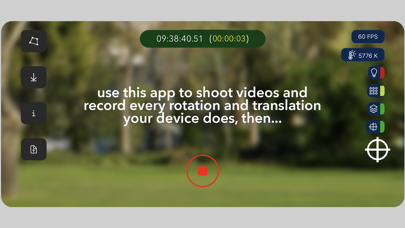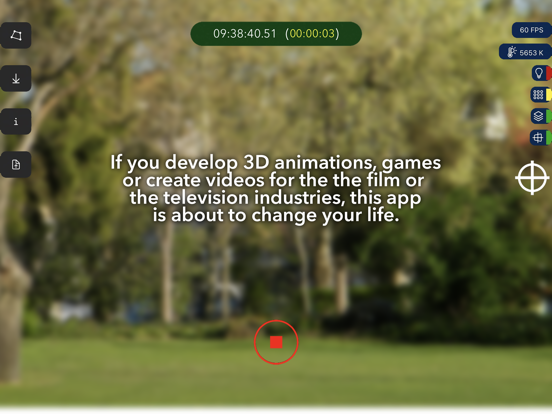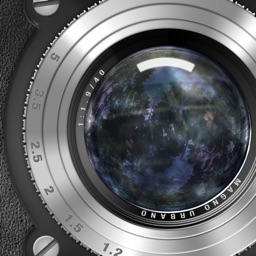Camera Tracking Pro
iOS Universel / Graphisme et design
The Impossible is now possible with Camera Tracking Pro for iOS
Professional rotation and translation camera tracking application for the 3D, Game, Film and Television industries. Suitable for any 3D app like Blender, Maya, 3DS Max, LightWave, Cinema 4D, Houdini, Unity 3D, Adobe Premiere and many others.
Shoot your videos using Camera Tracking Pro. Any rotation or translation your device does is tracked and recorded. Export these trackings and use them later on your favorite 3D application, like Blender, Maya, 3ds Max, Houdini, Unity 3D, LightWave, Cinema 4D, etc. Then you have a camera that reproduces everything your device did in real life.
Great to match live shots and CGI.
You can also use Camera Tracking Pro with your professional camera. Just attach your iPhone to the same rig you have your camera, run Camera Tracking Pro and that’s it.
Camera Tracking Pro for iOS will use top notch Augmented Reality and Machine Learning techniques to identify elements on your real life scenes and use them to track the camera movement.
Sounds good?
Also, by using your hands and your imagination, you can also use Camera Tracking Pro for iOS to simulate events like earthquakes, tsunamis, helicopters and planes taking off or landing, soldiers on the battlefield, race cars, boats and more. Imagine what would take to create keyframes manually to make the camera or other objects on your 3D application perform these events.
The impossible is now possible with Camera Tracking Pro for iOS.
More informations at:
https://katkay.com
Quoi de neuf dans la dernière version ?
1. The red arrow reference object was replaced by a cubical column, smaller and less obtrusive.
2. You can now tap on the screen to choose where the column reference should anchor, horizontally or vertically.
3. Code was improved and optimized in many aspects.
4. Tracking precision increased.
5. Sharing a file video deletion bug fixed.
6. You now have a clapperboard frame at the beginning of the video and another frame of clapperboard upside down, at the end of the video. These points mark the beginning and end of tracking and serve as a reference to synchronism.







